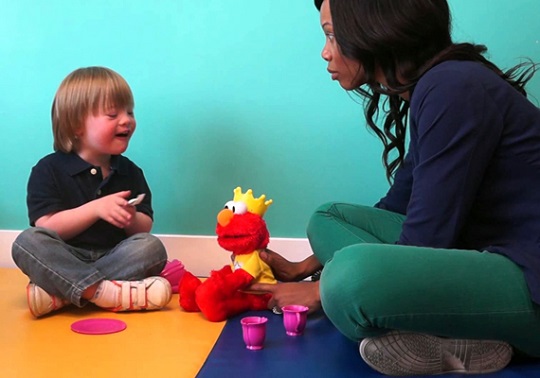
Recreational therapies can be used to treat patients suffering from some kind of speech impediment. If games are introduced during the treatment, the minors do not only have fun, but also indirectly work on their difficulties.
Playing has a very significant role in the rehabilitation processes when it becomes a therapeutic tool that helps the patients to indirectly work on their difficulties. Thanks to recreational therapies, minors do not only enjoy, discover and express their feelings and emotions, but they also develop their motor, cognitive, social and emotional skills.
In the field of speech therapy, new non-invasive rehabilitation techniques like the elastic therapeutic taping and electrostimulation are being introduced. When these techniques are to be applied to children suffering a very important speech impediment it is very important to design games to favour their collaboration.
Elastic therapeutic tape
Elastic therapeutic tape or kinesio taping complements myofunctional treatment and is used to stimulate muscular and circulatory functions, and to obtain better neurophysiological and mechanical effects. It applies an adhesive tape on the area to be treated. Bandage offers a proprioceptive stimulation and acts as an analgesic. It can be used to treat several pathologies and affectations such as dysphonia, dysphagia, atypical deglutition and facial paralysis.
In the field of speech therapy, new non-invasive rehabilitation techniques like the elastic therapeutic taping and electrostimulation are being introduced.
From the Speech Therapy Area of the Neurorehabilitation Service of Hospitales Nisa, they recommend to introduce bandage as a costume during treatments with children. Bandage can be placed on the lips’ orbicularis muscle or used to conceal the muscles tone in bruxism cases. The most frequent uses of these bandages are:
- To reduce drooling;
- To reduce masticatory muscles tone;
- To increase facial muscle tone;
- To favour lip seal.
Image source: neurorhb.com
Electrostimulation
Together with the neuromuscular bandage, neuromuscular electrical stimulation (NMES) is other of the new techniques used in the field of speech therapy, normally used in cases of facial paralysis and dysphagia.
Neuromuscular electrical stimulation consists on applying transcutaneous electrodes on the skin connected to a machine that transmits electrical stimulus to the affected muscle.
Each person has a different level of sensibility to the current. For this reason, experts of the speech therapy field of the neurorehabilitation Service of Hospitales Nisa recommend that when applying this treatment with children, the therapist and the patient must have an electrode each. Through tickles the tone and strength of orofacial structures can be improved.
Neuromuscular electrical stimulation can also be applied to treat dysphagia, the disorder caused by the difficulty or discomfort when swallowing that causes complications such as malnutrition, dehydration and pneumonias.
When the affected person presents a difficulty to prepare the alimentary bolus, electrodes must de placed over the beginning of the cricothyroid muscle and on the muscles located above the hyoid bone in the neck, the suprahyoid muscles. With this, it seeks:
- To improve the tone and strength of the cricothyroid muscle and the suprahyoid muscles;
- To improve the function and sensibility of the affected zone;
- To increase the laryngeal ascension;
- To improve lingual propulsion;
- To increase the activation of the swallowing reflection.








